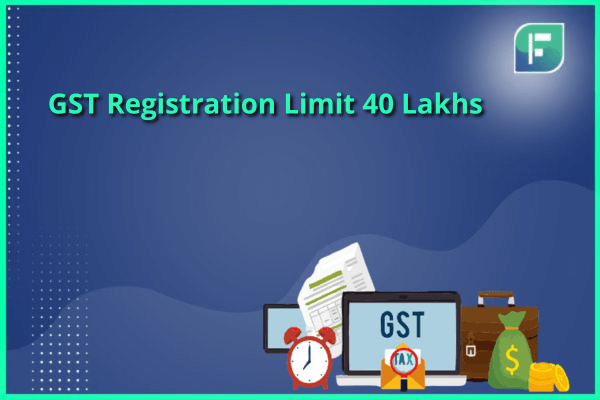Goods and services Tax is an indirect Tax which has been levied on the goods and services available in India. But one thing which everyone should know is that goods and services tax registration is not mandatory for every business owner. There is a threshold limit which has been mentioned under the Goods and Services Act of 2017. Only those businesses need to take GST registration which falls under this threshold limit. This is also known as eligibility for the goods and services tax registration. This eligibility is different for goods and services. The present blog will discuss the GST registration limit for different goods and services.
What is GST Registration?
In order to be recognized under the Goods and Services Act of 2017 as a goods and services tax payer one needs to do registration with the GST department and this registration is known as GST registration in India. All the individuals as well as organizations need to take this registration if they fall under the ambit of GST registration limit . GST is an indirect tax that levies on the transaction of various goods and services. This is the biggest tax reform in India. India is not the only country where GST has been levied. There are approximately 160 countries in the world who have adopted this goods and services tax. It is of three types that includes CGST, SGST and IGST.
What is the GST Registration Limit in India?
Goods and services tax registration, commonly known as GST registration is not compulsory for all the business owners. It is compulsory only for those businesses which fall under the eligibility criteria for GST threshold limit. There are certain exceptions of this GST registration limit which we will discuss later in the same blog. Given below are the different goods and services threshold limit prescribed under the GST law:
Understand the 40 lakhs Threshold
Initially when the Goods and Services Act of 2017 came into force the GST registration limit for both the goods as well as service providers was Rs. 20 lakhs. But later it was found that due to this threshold limit small businesses are suffering. Hence for the benefit of small businesses the government increased the threshold limit for those who are dealing in goods. Now the threshold limit for the business ideals in goods is Rs. 40 lakhs. This was changed from Rs. 20 lakhs to Rs. 40 lakhs through the notification no. 10/2019-Central Tax dated 7th March 2019.
Understand the 20 lakhs Threshold
Mainly there are two types of business in India, businesses which are dealing in goods and businesses which are dealing in services. We have already discussed the threshold limit of the businesses that deal in goods above. Many people have a myth that the GST threshold limit is same for both the goods and services but it’s not. It was the same when GST came in 2017 but later it got changed in 2019. Now the threshold limit for services is Rs 20 lakhs but it got changed for the goods.
Section 24 of the CGST Act of 2017
Under section 24 of the Goods and Services Tax Act of 2017 certain exceptions of the threshold limit which has been discussed above are mentioned. Some of the important ones are given below:
- Firstly if any business is involved in the business activities through e-commerce then he has to obtain goods and services tax registration. Here turnover does not matter.
- If the business is involved in interstate transactions it must have to take goods and services tax registration. Here as well turnover of the business is irrelevant.
- Casual taxable individuals who are making casual supplies must take goods and services tax registration
- Those who needs to pay the tax under the reverse charge must register for goods and services tax
- Businesses as well as individuals who needs to pay tax under section 9 clause 5 of the GST law
- Taxable persons who are NRIs and involved in the taxable supplies
- One who falls under the ambit of section 51
- Agent or representative who is liable to pay tax on behalf of his principle who needs to pay GST mandatorily
- Input service distributors
Benefits of 40 lakhs GST Registration Limit
Some of the benefits or advantages of the GST registration limit of Rs. 40 lakhs is mentioned below:
- Many businesses freed from taking registration as they did not fall under the GST threshold limit of Rs. 40 lakhs
- Freed from maintaining paperwork regarding various things related to goods and services tax registration and its compliances
- There is no burdon regarding regular goods and services tax filing
- Can focus on the business
- Decrease the financial burden on the Micro, Small and Medium enterprises
- Small business can grow without goods and services tax registration burdon
Conclusion
In India, registration for the Goods and Services Tax, commonly known as GST registration, is a requirement for businesses and individuals only if their turnover exceeds the GST threshold limit. This GST registration limit is Rs. 40 lakhs for those dealing in goods and Rs. 20 lakhs for service providers. However, certain exceptions, as specified under Section 24 of the CGST Act of 2017, may still necessitate registration, such as e-commerce operations, interstate transactions, and others. The increase in the goods threshold limit to Rs. 40 lakhs from the initial Rs. 20 lakhs has relieved many small businesses from the paperwork and compliance burden associated with GST, allowing them to focus on growth and reducing the financial strain on Micro, Small, and Medium Enterprises. This change has significantly benefited small businesses, facilitating their growth and simplifying tax compliance processes.






